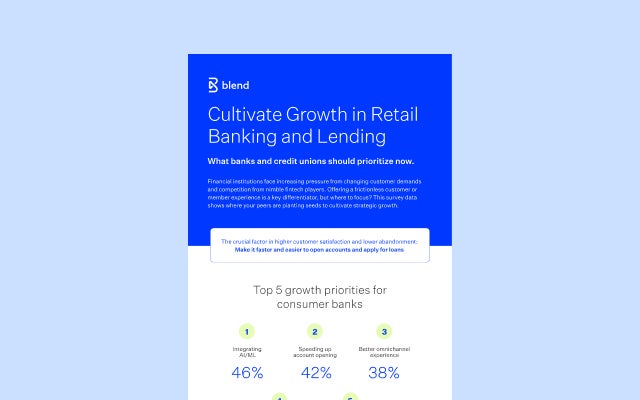August 24, 2022 in Thought leadership
Digital banking innovation: Four changes for leaders to watch
Explore how investments in engagement, data, gamification, and mobile can cement your reputation as a trend setter.

Digital banking has greatly expanded in the past few years, accelerated in part by the increased use of digital channels for financial transactions. And levels of digital adoption will continue to accelerate as financial institutions move into the next frontier of digital product and service offerings.
Whether you’re a tech leader, an operations manager, or chief lending officer of a large bank, fintech startup, or community credit union, leading the digital transformation within your organization means you’re always keeping a close eye on the digital landscape.
Here are four changes to watch now and in the near future when it comes to digital banking innovation:
1: Transforming how financial institutions engage with customers
Customers are increasingly turning to digital self-service to access accounts, deposit checks, apply for loans, and invest funds. Additionally, Moody’s reported the existence of 100 digital challenger banks in 2017. These startup, online-only institutions rose in number to 250 by 2022 — a figure that will likely only continue to increase.
Financial institutions can step up their digital banking innovation game to meet evolving expectations and fight back against market disruptors by sticking to core values, which include excellence in service, breadth of delivery, and deepness of customer relationships.
While challenger bank models may tout cutting-edge tech and ease of use, they rarely offer the full array of products and services consumers expect from financial institutions.
This is an opportunity for traditional providers to invest in ways to meet modern delivery expectations while maintaining the capability to meet needs across a consumer’s lifetime. One way to do so is by investing in technology that not only provides a well-rounded portfolio of financial products and services, but also exceeds in customer engagement.
2: Refining big data to better hone in on customer needs
A customer’s life cycle is like a game of Clue. Each transaction, loan, deposit, or investment they make is a digital breadcrumb. And while banks proactively use these insights to remain competitive on the digital banking innovation front, there’s a delicate balance when it comes to data usage and access.
Increasingly, customers are wary of how banks use their data. A commissioned report conducted by Forrester Consulting on behalf of Blend found that while survey respondents are prepared to reward banks for relevant personalized experiences, they do want control over that data usage. Further, they expect banks to ethically handle both personal and financial information.
The onus, therefore, is on bank leaders to continuously balance the fine line of consumer demand for personalized insights with regulatory demand for fair, secure, and honest usage of available data.
3: The gamification of personal financial management
Language learning app Duolingo keeps its users engaged by offering points, badges, and competitions. FitBit’s platform provides fitness challenges, the ability to make social connections, and push notifications celebrating step counts or workout streaks. Fetch Rewards offers customers points for scanning grocery receipts and translates those points into cash back or gift cards.
In the same vein, financial providers can better engage customers by making finances more exciting. Gamification as a digital banking innovation can unlock insights into your customers while educating them and appealing to their desire for competition.
Gamifying personal financial management tools or banking apps is also an opportunity to simplify some of the financial world’s most complicated and stressful moments: making investment decisions, navigating the mortgage process, and organizing personal spending. Complex information can be translated simply by tapping into unique delivery formats, including trivia, challenges and quizzes, colorful graphics, and short animations.
Incorporating incentives and virtual rewards can also enhance customer engagement while giving the bank or lender another opportunity to uncover insights and ultimately point customers toward products and services that align with their needs.
4: Thinking beyond mobile
The second installment of cult classic “Back to the Future” featured a fingerprint ID that unlocked doors and paid for taxis — all the way back in 1989. Society today takes that technology for granted, routinely using biometrics to unlock our smartphones via facial recognition or fingerprints.
We may not be commuting to work in flying cars as predicted in “Back to the Future,” but consumers can already pay for coffee using a smartwatch or complete a retail purchase with Apple Pay or Google Pay.
While smartphone makers have long recognized the power of biometric technology, financial institutions are increasingly enthusiastic about biometric adoption as part of their digital banking innovation strategy.
Financial institutions face heavy regulation, but the continued rise of data breaches may force the industry to revamp the way they think about customer onboarding, authentication, and payments that extend well beyond mobile banking.
92% of consumers prefer biometric identification over a password. The prevalence of wearables like smartwatches, smart rings, and other biometric-based devices will continue to challenge all industries — financial included — to reimagine customer experiences.
In the not-too-distant future, will financial providers allow customers to complete bank transactions using an iris scanner, finish loan paperwork with the tap of a smart ring, or transfer funds with fingerprint verification? Time will tell.
The bottom line on digital banking innovation
The new frontier of banking is a survival-of-the-fittest game. Keeping ahead of trends will position your financial institution at the forefront of digital banking innovation, allowing you to increase productivity, drive growth, and deepen customer relationships in the long term.

Ready to unlock your financial institution’s potential for digital banking innovation?
Find out what we're up to!
Subscribe to get Blend news, customer stories, events, and industry insights.


